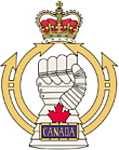The full and correct answer can be a little difficult to understand by the uninitiated if not shared correctly. It is far too long to write the answer so here it is direct from my old instructors Pamphlet 33 Chieftain, gunnery book.

And >

I hope that helps to clear things up for you

If not, try this.
The Mk 2 began service in 1967, and featured as a primary upgrade a new version of the Leyland L60 engine developing 650 horsepower, and a Coventry H30 23 horsepower diesel APU.
The L60 proved troublesome mechanically and was not what the British Army wanted for the Chieftain, but NATO standards at the time called for a multifuel engine, so the L60 was adopted over the Rolls-Royce diesel engine the Army wanted.
The Chieftain Mk 3 had an APU with improved fuel economy, a dry air cleaner for the engine, a new commander’s cupola with a single hatch instead of a dual hatch, and return rollers, axle arms, and track tensioners which were oil-filled for improved lubrication. The engine was modified through the “Totem Pole” program, which gave the engine improved reliability, improved hot-climate performance, a starter that worked better in low temperatures, and improved brakes. (This was the L60A engine.) In addition, the gun barrel was more easily removed for maintenance; ammunition storage was improved to reduce latch breakages, and the track skirts were modified to strengthen the attachments as well as make them easier to raise for suspension maintenance. The Mk 3/2 is essentially the same vehicle as the Mk 3, but with improved air circulation for the turret.
The Mk 3/3 had several improvements that (in my opinion) should have made it a Mark of its own.
The commander finally had emergency override controls for the main gun. More important modifications included a ranging machinegun with extended range (2500 meters), a laser rangefinder, the improvements in turret air circulation, a modified NBC system, and an engine uprated to 720 horsepower and equipped with a low-loss air cleaner.
Turret armor was also improved.
The Mk 3/3P is identical, but has improved performance in desert environments and was built specifically for Iran.
In 1970, the Israelis were in the market for a new tank, and they heavily considered the Chieftain. Leyland came up with the Mk 4, which had optimizations for desert conditions found in Israel, and the project went as far as a pre-order and the testing of two Mk 4s at the Yuma Proving Ground in Arizona in the US. In the end, however, the Israelis canceled their order.
The Mk 5 was also a major upgrade for the Chieftain, and it is considered the definitive model of the Chieftain. The engine was changed to the L60 Mk 7A, with has a 750 horsepower engine, improved air cleaners, an enhanced starter, battery heaters, and revised engine covers.
The transmission was strengthened to alleviate a common maintenance problem with the transmission.
The bins for the bagged charges was improved for safety reasons, and ammunition stowage was rearranged to grant a large increase in ammunition and bagged charge supply.
The gunner’s and commander’s sighting telescopes were replaced with improved models, and half the ranging machinegun’s ammunition was removed in recognition that the ranging machinegun was rapidly becoming an out-of date device. The main gun received an improved thermal sleeve, and the travel lock was also improved.
A device to detect whether other vehicles are scanning the Mk 5 with IR viewers was added.
The commander’s machinegun mount was improved to allow it to elevate straight up. The Mk 5 was first delivered to the British Army in 1972, and soon thereafter to Iran as the Mk 5/P.
The Mk 5/L improved the laser rangefinder module; the Mk 5/2 improved maintenance capabilities for the power pack. (This version was also bought by Kuwait as the Mk 5/2K.)
The Mk 5/3 improved the commander’s cupola, and added the IFCS (Improved Fire Control System).
The Mk 5/3P was designed for Iran, and was similar to a standard Mk 5/3 except for an increase in fuel capacity to 975 liters, increased mine protection (floor armor is AV7), and an automatic transmission.
The Mk 5/4 is a Mk 5/3 with modifications to allow better stowage of APFSDS ammunition and a better sight graticule for the gunner.
The Mk 6 Chieftains were largely Mk 1 and Mk 2 Chieftains that were upgraded to Mk 5 standards.
The Mk 7s were Mk 3s upgraded to Mk 5 standard.
The Mk 8 upgraded the Mk 3/3 to the Mk 5 standard.
The Mk 9 was a modification to all Chieftains that allowed for more APFSDS round storage.
The primary Mk 10 modification was the Stillbrew armor upgrade. This upgrade was done only to a very limited amount of Chieftains, most of which were stationed in Germany with the BAOR. The Stillbrew armor included very examples of what became Chobham armor for the glacis and turret front.
The NBC system was also improved.
The Stillbrew armor package, more an experiment than anything else, was withdrawn from the British Army after a few years, but not before being upgraded to the Mk 11 specification.
The Mk 11 was fitted with the TOGS (Thermal Observation and Gunnery System).
The Mk 11 was the final version of the Chieftain for the British Army; replacement by the Challenger 1 began less than 5 years later.
Keith




















